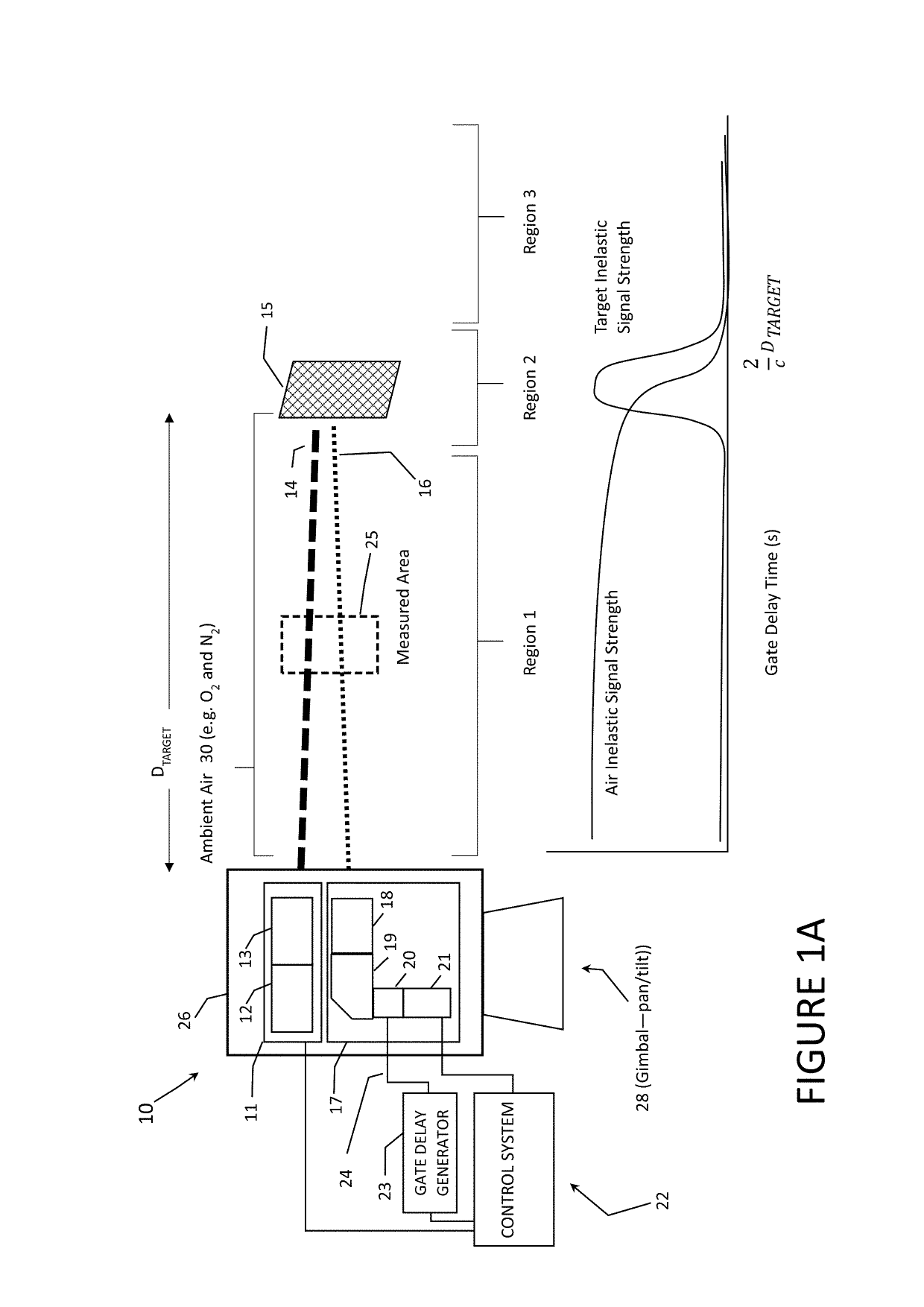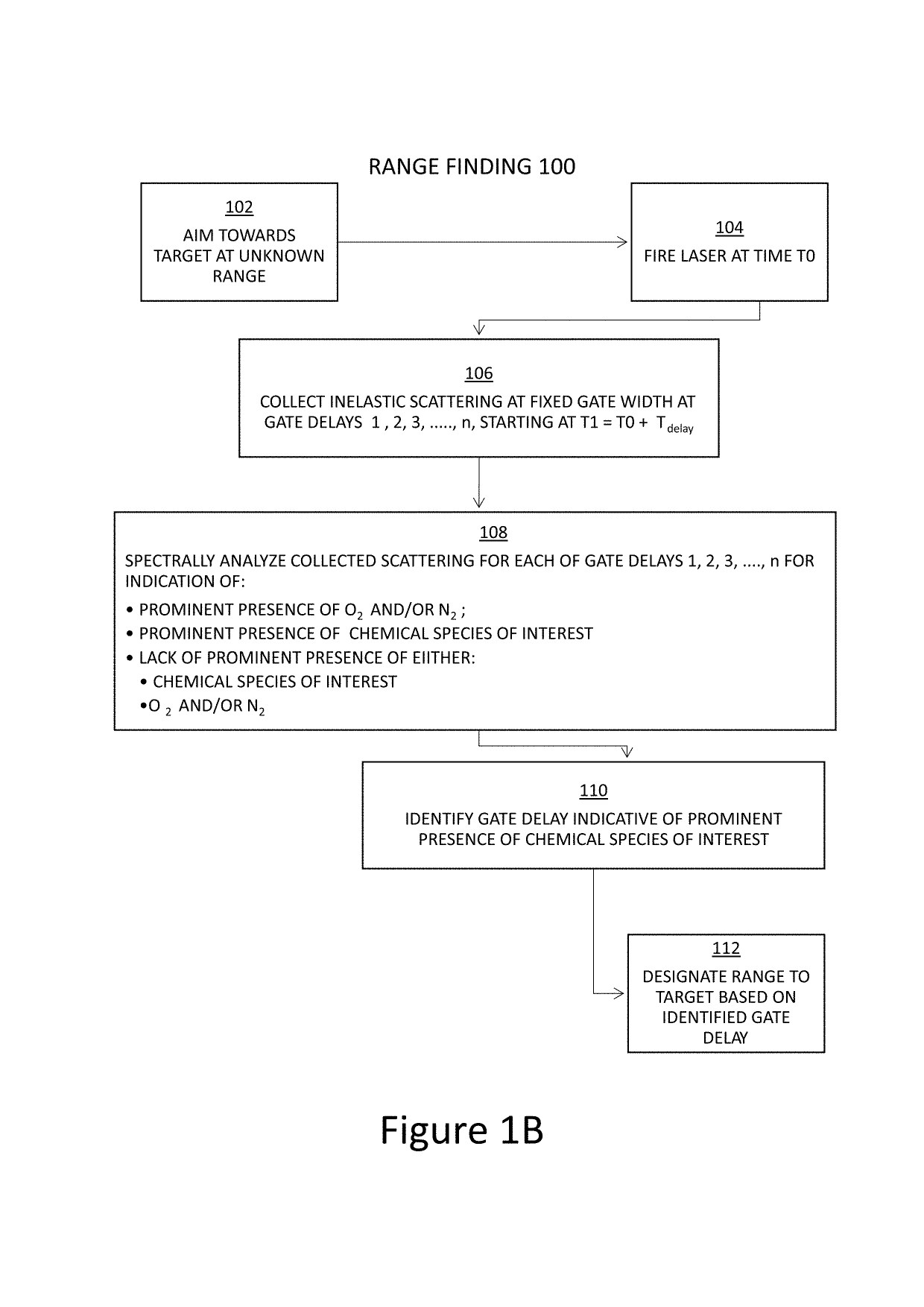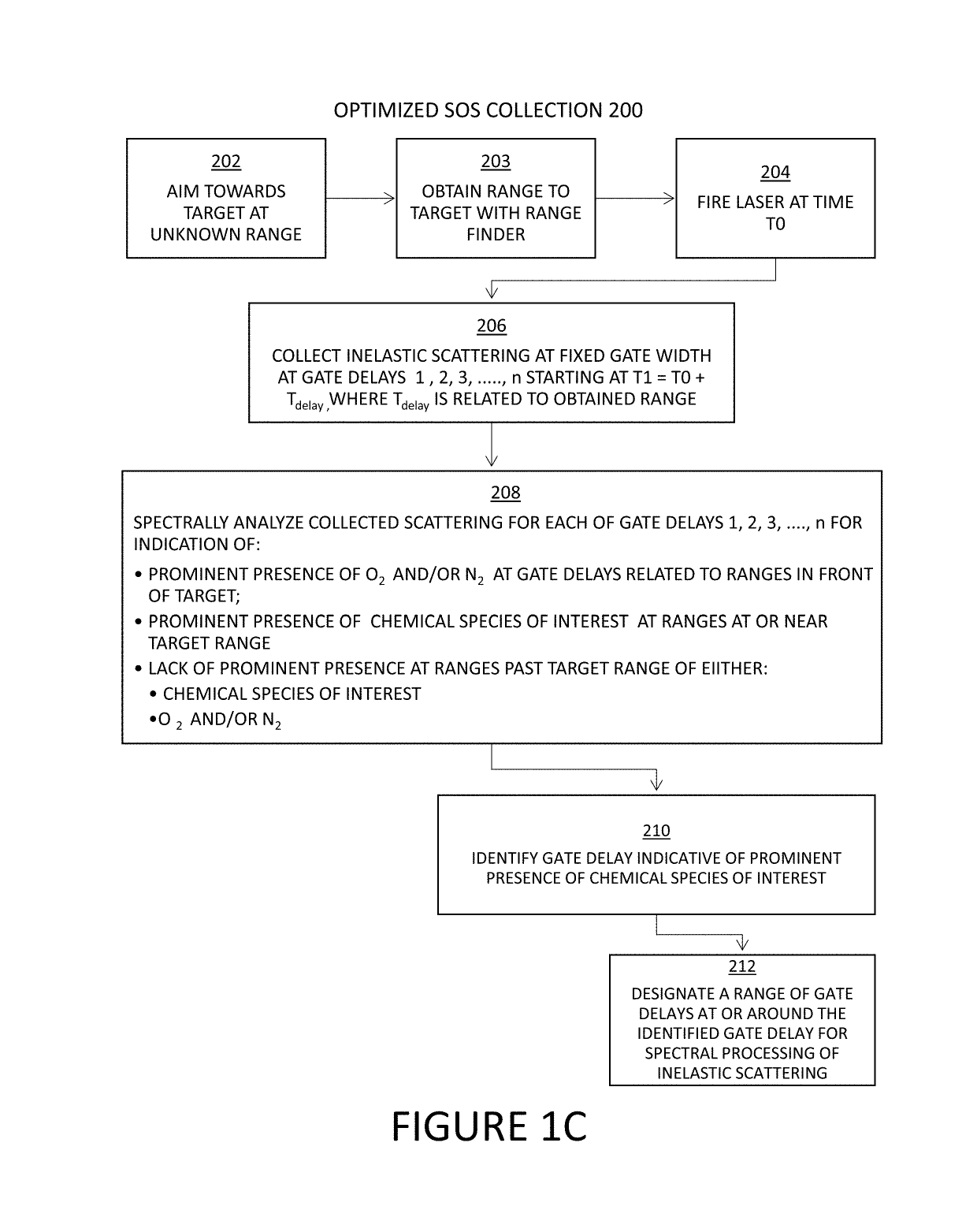Method for optimizing detection of inelastically scattered light from a distant target by measuring the target distance using inelastically scattered light
a technology of inelastically scattered light and distance measurement, which is applied in the direction of material excitation analysis, instruments, measurement devices, etc., can solve the problems of reducing the detection performance, retro-reflecting targets, and reducing the elastic scattered signal, so as to improve the reliability and sensitivity of standoff raman scattering, and simplify the design and operation. , to achieve the effect of maximizing the desired signal
- Summary
- Abstract
- Description
- Claims
- Application Information
AI Technical Summary
Benefits of technology
Problems solved by technology
Method used
Image
Examples
Embodiment Construction
4.1 Overview
[0042]For a better understanding of the invention, examples of forms it can take will now be described in detail. It is to be understood, however, that the following examples are neither exclusive nor inclusive of all forms and embodiments the invention can take. Variations obvious to those skilled in the art will be included within the invention, which is defined by the claims.
[0043]For instance, the descriptions below will mention certain pulsed UV lasers of indicated characteristics as a target-illuminating source, certain optical arrangements for both focusing the laser towards a target and collecting scattering from the target, certain gate generation techniques for differentiating portions of the collected scattering based on time-of-flight, certain spectrometry components and techniques, and certain spectrometry processing components and techniques; all in the context of aspects of the present invention. It is to be understood that these components and techniques ...
PUM
| Property | Measurement | Unit |
|---|---|---|
| energy | aaaaa | aaaaa |
| energy | aaaaa | aaaaa |
| wavelengths | aaaaa | aaaaa |
Abstract
Description
Claims
Application Information
 Login to View More
Login to View More - R&D
- Intellectual Property
- Life Sciences
- Materials
- Tech Scout
- Unparalleled Data Quality
- Higher Quality Content
- 60% Fewer Hallucinations
Browse by: Latest US Patents, China's latest patents, Technical Efficacy Thesaurus, Application Domain, Technology Topic, Popular Technical Reports.
© 2025 PatSnap. All rights reserved.Legal|Privacy policy|Modern Slavery Act Transparency Statement|Sitemap|About US| Contact US: help@patsnap.com



